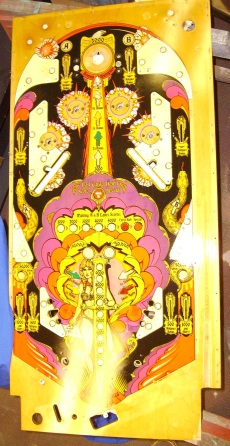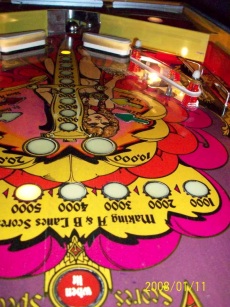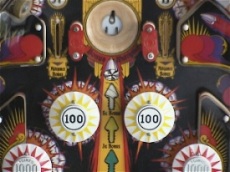Clearcoat Continued
There are two methods that I have used in removing Mylar. One is to soak it with Goo Gone and then get a little corner to lift. Once you do that, you squirt more Goo Gone under the Mylar. At the same time, you use a hair dryer to apply heat to the top of the Mylar. The combination of the heat and Goo Gone breaks down the glue allowing you to remove the Mylar. In doing so, you have to have patience and do it very slowly. If not, you may pull up paint. The second method is to use “freeze spray.” With this method, you use a can of compressed air like the ones used to clean computer keyboards and circuit boards. You turn the can upside down and spray at a corner off the Mylar. The air comes out cold and “freezes” the glue causing it to lose its adhesion which allows you to pull it up. Of the two methods, I found that the freeze methods is simpler and causes less damage. However, it tends to leave more residue which will have to be cleaned up afterwards. So, if you are removing Mylar off of a playfield that is in good shape, the Goo Gone may be the best method. If there is any chance of paint lifting, the freeze method is better. For this game, I used the freeze method.
After getting the Mylar removed, the most difficult part was getting all of the glue residue off. I used Goo Gone, heat, and a lot of elbow grease, but was finally able to get it all off. Next, I sanded the shooter lane. This helped remove a lot of the dirt that was ingrained in the wood. Since I was going to clear-coat it, it didn’t matter that I was taking the original clear off of this area. I also sanded the arch at the top and the saucer. I am so glad I did the saucer because it made a huge difference.
I wiped the playfield down with Naphtha to make sure it was completely clean. I was then ready to apply the clear coat. I used the Varathan brand clear-coat in spray cans. It took 5-6 coats following the directions on the can. After applying the first coat I began to wonder if I had made a mistake. The first coat went on very “lumpy.” In fact, I thought that maybe I hadn’t shaken the can up well enough. The truth is, the first coat is always the worst looking and it will correct itself as you apply more coats. I did not sand between any of the coats. I bought some 1200 grit paper for this purpose, but after sanding one small area under the arch as a test, decided that I would be better off not sanding.
The directions said to wait 24 hours between coats. So, each day for a week I applied a new coat. Each coat was sprayed on by first covering the playfield in overlapping “passes” done lengthwise and then overlapping “passes” done widthwise. Each day the result look better and better. The “lumpiness” disappeared after the third coat. I finished with about six coats. I then let it “cure” for about four weeks before installing anything on it. In the end, I was really pleased with the result. I’m sure that I will be clear-coating more playfields in the future. After the clear-coat cured, I put everything back together using the drawings and pictures I made earlier. Here is a list of the rest of the work I did to the playfield.
SECTION 4: Backglass
The backglass on this game was almost perfect. There was no peeling, flaking, or problems with the paint. It was one with the inscription on the dagger. I sealed the back of it using Krylon Triple thick. I taped off the score and credit windows and then applied two light coats in each direction. The lift channel did have quite a bit of rust. I was able to remove most of it using Eagle One Never Dull Chrome wadding.
SECTION 5: Miscellaneous
- I installed new reproduction bumper caps.
- I installed new bumper bodies and skirts.
- I dry tumbled all of the small metal parts to make them shiny.
- I polished all of the large metal areas with Never Dull.
- I installed new coil sleeves on all bumpers and flippers.
- I polished the coin door with polishing compound and a drill.
- I put a new Bally sticker on the coin door.
- I repainted the legs gun metal gray.
- I repainted the lock down bar’s internal metal pieces chrome color.
- I put on new leg levelers. These really add a nice touch to a game.
- I put in a new coin door lock.
- A new ball was put in to minimize playfield wear.



